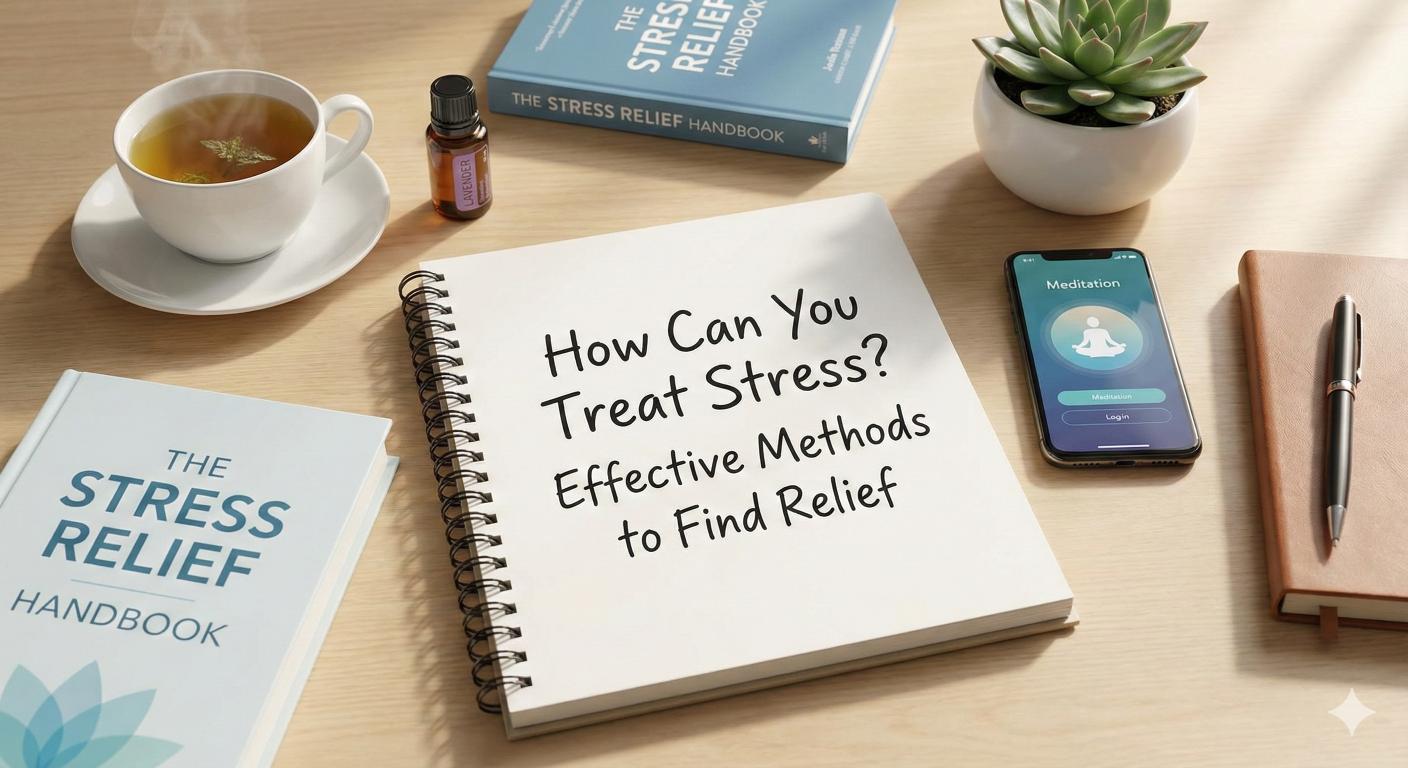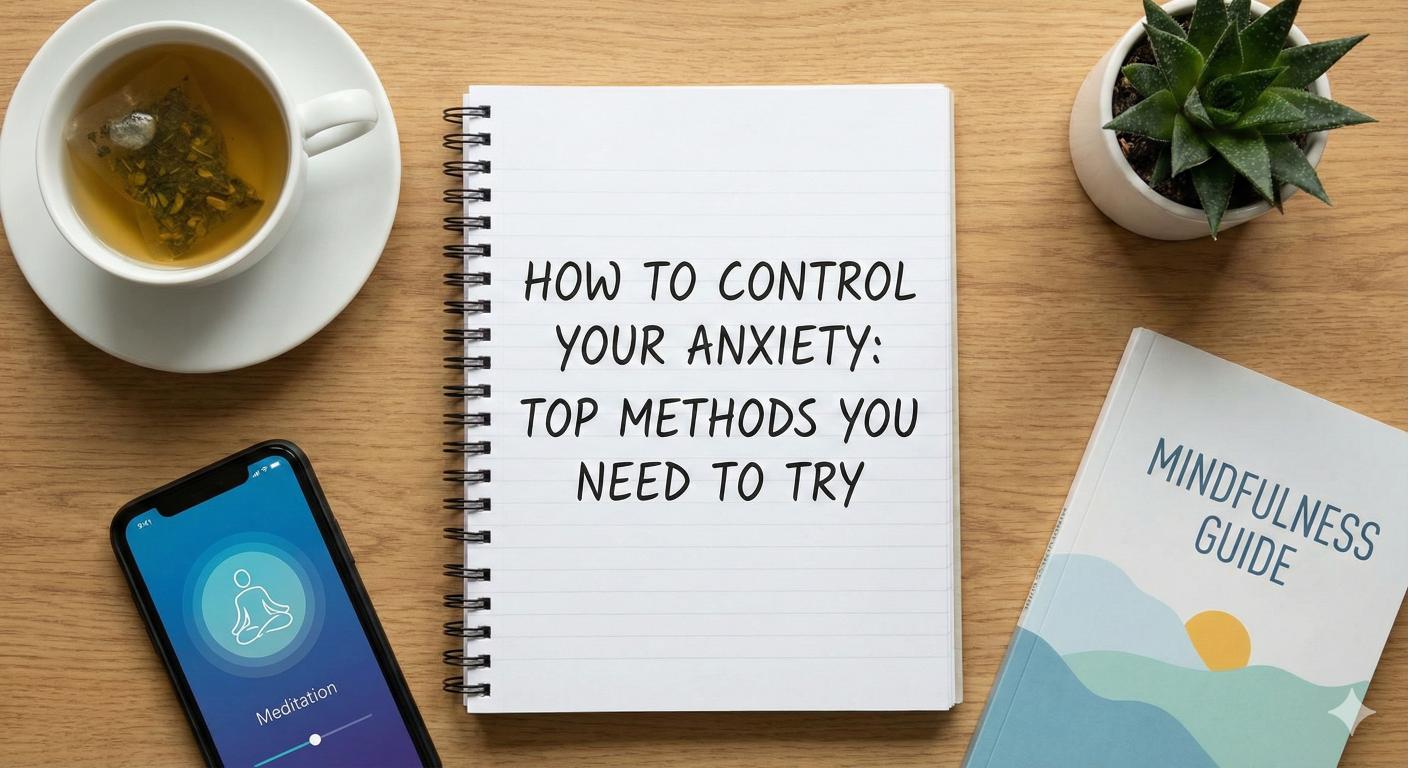Empowerment over Anxiety in Healthcare Scenarios: Expert Tips
Discover expert tips for addressing anxiety in healthcare settings and empower yourself in medical scenarios.


Understanding Anxiety in Healthcare
Impact of Anxiety in Medical Settings
Anxiety presents a significant challenge in healthcare environments. It can lead to increased disability, excessive utilization of healthcare resources, and a diminished quality of life. Addressing anxiety in healthcare settings is crucial for overall patient well-being [1]. This not only improves individual patient outcomes but also enhances the efficiency of healthcare services.
The following table summarizes the impacts of anxiety in medical settings:
ImpactDescriptionIncreased DisabilityPatients may experience limitations in daily activities due to anxiety.Resource UtilizationHigher rates of medical visits or procedures due to anxiety-related complications.Impaired Quality of LifeErosion of patients' emotional and psychological well-being.
Classification of Anxiety Disorders
Anxiety can manifest in various forms, with several classifications that are particularly common in patients. Recognizing these disorders is essential for tailoring effective treatment and support strategies. The following table outlines the most common classifications of anxiety disorders:
Anxiety DisorderDescriptionAnxious Adjustment DisorderAnxiety resulting from a specific stressor or life change.Generalized Anxiety DisorderPersistent, excessive worry about various aspects of life.Panic DisorderEpisodes of intense fear accompanied by physical symptoms.Phobic AnxietyExtreme fear of a specific object or situation.
Pathological anxiety is notably more prevalent among individuals with chronic medical conditions, highlighting the interplay between mental health and physical health [1]. Understanding these classifications aids healthcare providers in addressing anxiety effectively and improving patient care outcomes. For more on the effects of anxiety, see our article on the impact of anxiety on physical health.

Addressing Anxiety Through Therapy
In the quest for addressing anxiety in healthcare settings, therapeutic approaches play a crucial role. Two main categories of therapy that have proven effective are psychotherapy and medications for anxiety.
Psychotherapy for Anxiety
Psychotherapy, commonly referred to as “talk therapy,” is a fundamental approach to managing anxiety. It encompasses various methods, with Cognitive Behavioral Therapy (CBT) being the most recognized. CBT teaches individuals different ways of thinking, behaving, and reacting to situations to help reduce feelings of anxiety and fear [2].
The effectiveness of psychotherapy can be summarized as follows:
Type of TherapyDescriptionEffectivenessCognitive Behavioral Therapy (CBT)Focuses on changing negative thought patterns and behaviors.Considered the gold standard for treating anxiety disorders.Behavioral TreatmentsInvolves gradual exposure to anxiety-provoking triggers.Highly effective in reducing anxiety symptoms.Interpersonal TherapyAddresses emotional concerns and relationship issues.Beneficial for managing anxiety related to physical conditions.
Psychological interventions in healthcare settings also aim to improve patients' relationships and help them challenge unhelpful thoughts. These approaches help integrate patients into their normal lives, even when it increases anxiety temporarily.
Medications for Anxiety
Medications are another vital component in managing anxiety disorders. They do not cure anxiety but help alleviate symptoms. Common categories of medication include:
Medication TypeExamplesUseAntidepressantsSSRIs (Selective Serotonin Reuptake Inhibitors)Treats chronic anxiety and depression.Anti-anxiety medicationsBenzodiazepinesProvides immediate relief for anxiety symptoms.Beta-blockersPropranololReduces physical symptoms of anxiety, such as a racing heart.AntipsychoticsQuetiapineSometimes used for anxiety treatment in specific cases.
Each medication has its own advantages and disadvantages, which must be considered when treating anxiety in healthcare settings [1]. For effective management, healthcare providers often evaluate the individual needs of patients and may combine medication with psychotherapy for optimal results.
By utilizing both therapeutic strategies and medications, healthcare professionals can effectively support individuals in navigating the challenges of anxiety, helping them regain control over their emotional wellbeing. For more insights on anxiety management, consider exploring topics like guided imagery for anxiety reduction and breathing exercises to control anxiety.

Promoting Wellbeing and Support
In addressing anxiety in healthcare settings, promoting wellbeing and support plays a vital role. Two effective methods for doing so include participation in clinical trials and support groups for anxiety.
Participation in Clinical Trials
Clinical trials provide an opportunity for individuals facing anxiety disorders to access cutting-edge treatments and contribute to the advancement of medical knowledge. Research studies, such as clinical trials, are crucial for identifying new ways to prevent, detect, or treat anxiety disorders. Participating in these trials can lead to innovative treatment options and improve overall patient outcomes [2].
Those interested in participating in clinical trials should consider the following:
AspectDescriptionEligibilityRequirements vary by study and may include age, gender, and health condition.BenefitsAccess to new therapies, regular medical supervision, and financial compensation in some cases.RisksUncertainty about the effectiveness of new treatments and potential side effects.
Support Groups for Anxiety
Support groups offer individuals a platform to share experiences, coping strategies, and emotional support. They complement traditional treatments like therapy and medications by providing a sense of community and belonging. Research shows that support groups and stress management techniques, such as exercise, mindfulness, and meditation, can significantly help reduce symptoms of anxiety disorders.
Some benefits of joining support groups include:
BenefitDescriptionShared ExperiencesIndividuals connect with others facing similar struggles, reducing feelings of isolation.Enhanced Coping SkillsParticipants learn various coping techniques and strategies from one another.Emotional SupportGroups provide a safe space for expressing feelings and receiving encouragement.
Incorporating participation in clinical trials and joining support groups can significantly enhance one's coping strategies related to anxiety, facilitating a more supportive healthcare environment. To explore more about the benefits of support groups, visit our article on the role of support groups in managing anxiety.
Tools for Assessing Anxiety
When addressing anxiety in healthcare settings, various tools play a crucial role in identifying and managing patients' anxiety levels. Two prominent categories are self-reported questionnaires and the involvement of healthcare providers.
Self-Reported Questionnaires
Self-reported questionnaires are essential tools used to gauge anxiety levels in patients. These assessments allow patients to express their feelings and symptoms, enabling healthcare providers to screen for anxiety disorders effectively. Some commonly utilized questionnaires include:
Questionnaire NamePurposeHospital Anxiety and Depression Scale (HADS)Screens for anxiety and depression levelsState-Trait Anxiety Inventory (STAI)Differentiates between temporary and long-lasting anxietyGeneral Health Questionnaire (GHQ)Assesses mental health and psychiatric morbidity
Each of these questionnaires serves as a valuable resource for clinicians but there is no consensus on which tool is the most effective for detecting anxiety disorders [1]. The choice often depends on the specific context and the patient's needs. These tools can facilitate early intervention and tailored treatment strategies.
Role of Healthcare Providers
Healthcare providers play a critical role in assessing anxiety through direct patient interaction and the administration of self-reported questionnaires. By creating a supportive environment, they can encourage patients to communicate openly about their experiences and symptoms. This interaction often includes discussing the results of questionnaires, helping to frame the anxiety within the broader context of the patient's overall health.
Providers should be trained to recognize signs of anxiety and understand how it may impact physical health. They can leverage the data obtained from assessments to formulate effective treatment plans. Furthermore, healthcare professionals can guide patients toward additional resources and coping strategies, such as grounding techniques to stay present or breathing exercises to control anxiety.
By utilizing both self-reported tools and engaging with patients in a meaningful way, healthcare providers can effectively address anxiety in medical settings and support better health outcomes for their patients.
Strategies for Managing Anxiety
Managing anxiety in healthcare settings can significantly enhance the patient experience. Two effective strategies are creating calm environments and implementing patient-focused communication.
Creating Calm Environments
Developing a soothing office atmosphere is essential for reducing patient anxiety. A well-designed waiting area should include comfortable seating, calming colors, and soft lighting. The use of soothing music and the elimination of chaotic distractions can help create a peaceful environment, ultimately easing patient nerves.
Key Elements for Calm EnvironmentsDescriptionComfortable SeatingEnsure ample and comfortable seating to promote relaxation.Soothing MusicPlay soft background music to help reduce tension.Minimal DistractionsKeep the waiting area organized to avoid overwhelming stimuli.
These adjustments can significantly improve the overall experience for patients, allowing them to feel more at ease during their visit [3].
Patient-Focused Communication
Effective communication is vital in any healthcare setting, particularly when addressing anxiety. Engaging patients by actively listening to their concerns helps build trust and rapport. Healthcare providers can reduce anxiety levels during appointments by offering a clear overview of the visit, using simple, understandable language, and directly addressing any questions or concerns.
Strategies for enhancing patient communication include:
Patients often forget questions and important information during appointments, leading to confusion and frustration. Providing additional time to address these issues can improve the productivity and overall satisfaction of healthcare visits [3].
By creating calm environments and prioritizing effective communication, healthcare providers can play a crucial role in [addressing anxiety in healthcare settings].
Digital Solutions for Anxiety
Digital technologies are transforming the way anxiety is addressed in healthcare settings. E-health interventions and smartphone technologies are gaining popularity for their potential to provide accessible and effective support for individuals experiencing anxiety.
E-Health Interventions
E-health interventions are designed to leverage digital platforms for the assessment and treatment of anxiety disorders. Internet-delivered cognitive behavioral therapy (iCBT) has shown considerable efficacy in treating anxiety, often producing outcomes comparable to traditional face-to-face therapy. Courses typically consist of standardized modules delivered over a designated time frame, focusing on essential CBT skills to help individuals manage maladaptive thoughts and behaviors. Notably, improvements from iCBT can last up to five years post-treatment [4].
FeatureDescriptionDelivery MethodOnline modules, typically self-pacedEfficacyComparable to in-person therapyLongevity of BenefitsSymptom improvements observed up to 5 years post-treatment
Despite these benefits, maintaining patient engagement remains a challenge. Lower completion rates have been noted in primary care compared to clinical trials, indicating a need for tailored treatments and further research into predictors of treatment responses to enhance iCBT effectiveness.
Smartphone Technologies for Anxiety
Smartphone applications for mental health provide a contemporary route for alleviating anxiety symptoms. These technologies enable users to access psychological therapies on the go. Though the evidence supporting their efficacy is not as robust as traditional therapies, studies suggest that mental health apps can yield reductions in anxiety levels. However, inactive or non-engaging versions of these applications may still produce similar outcomes, potentially indicating a "digital" placebo effect [4].
AspectConsiderationsEfficacyMixed results in real-world settingsPrivacy ConcernsIssues related to data sharing and securityEngagementUsers may struggle to maintain consistent useEffectivenessVaries by app; need for further research
While smartphone interventions display promise, questions remain about their effectiveness in real-life clinical environments. Researchers emphasize the importance of addressing privacy issues, ensuring user engagement, and understanding the overall effectiveness of anxiety apps before broad implementation. For additional strategies to manage anxiety, consider exploring breathing exercises to control anxiety or guided imagery for anxiety reduction.
References
[2]:
[3]:
[4]:
More Resources
A team ready to start your journey.
Get in touch — today.
We are a safe space – a haven for exceptional individuals to receive discreet, personalized, in-person treatment and care.
.avif)










